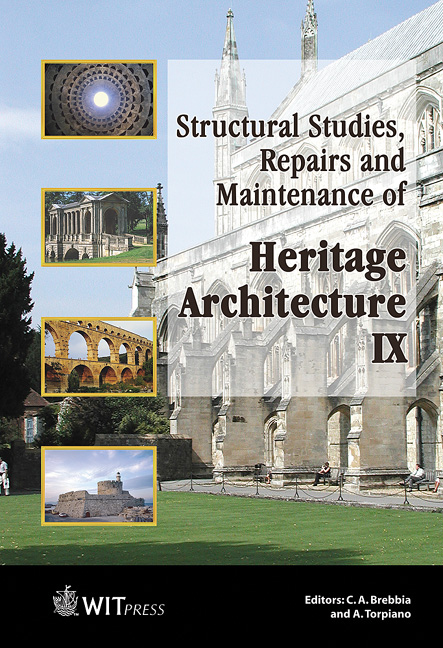Characterisation Of Mechanical Properties Of Historic Mortars – Testing Of Irregular Samples
Price
Free (open access)
Transaction
Volume
83
Pages
10
Published
2005
Size
1,547 kb
Paper DOI
10.2495/STR050351
Copyright
WIT Press
Author(s)
J. Válek & R. Veiga
Abstract
The design of new renders and repair mortars requires a certain knowledge about the mechanical properties of historic materials. The common problem is that the extracted samples of historic mortars often have an irregular shape not suitable for standardised physical and mechanical laboratory tests. This is for example a problem with the testing of bedding mortars from historic brick masonry and/or renders where a typical sample width is around 10–15mm. Typical samples from wall cores are mortar bulks of very irregular shapes. In addition to the various non-standard sizes and shapes there is often a need for minimum intervention which leads to minimalisation of samples in numbers and sizes. The experimental part describes testing of specimens made of irregular samples of historic and modern mortars in compression and bending. The key problem was obtaining a certain measurable shape. This was done by cutting of the sample or by adding some material. The determined properties are compared to the properties obtained from the tests on standard specimens. The methods of testing are discussed and evaluated. Keywords: historic lime mortar, non-standard testing, compressive and flexural strength, irregular mortar sample. 1 Introduction Historic mortars are mostly lime based and if the lime is non-hydraulic, their strength in compression can typically be between 0.5-3.0N/mm2. If the lime is hydraulic or some puzzolanic material is added then the compressive strength depends on the amount of the hydraulic components and their reactivity connected with curing conditions. One can expect compressive strength of such
Keywords
historic lime mortar, non-standard testing, compressive and flexural strength, irregular mortar sample.




